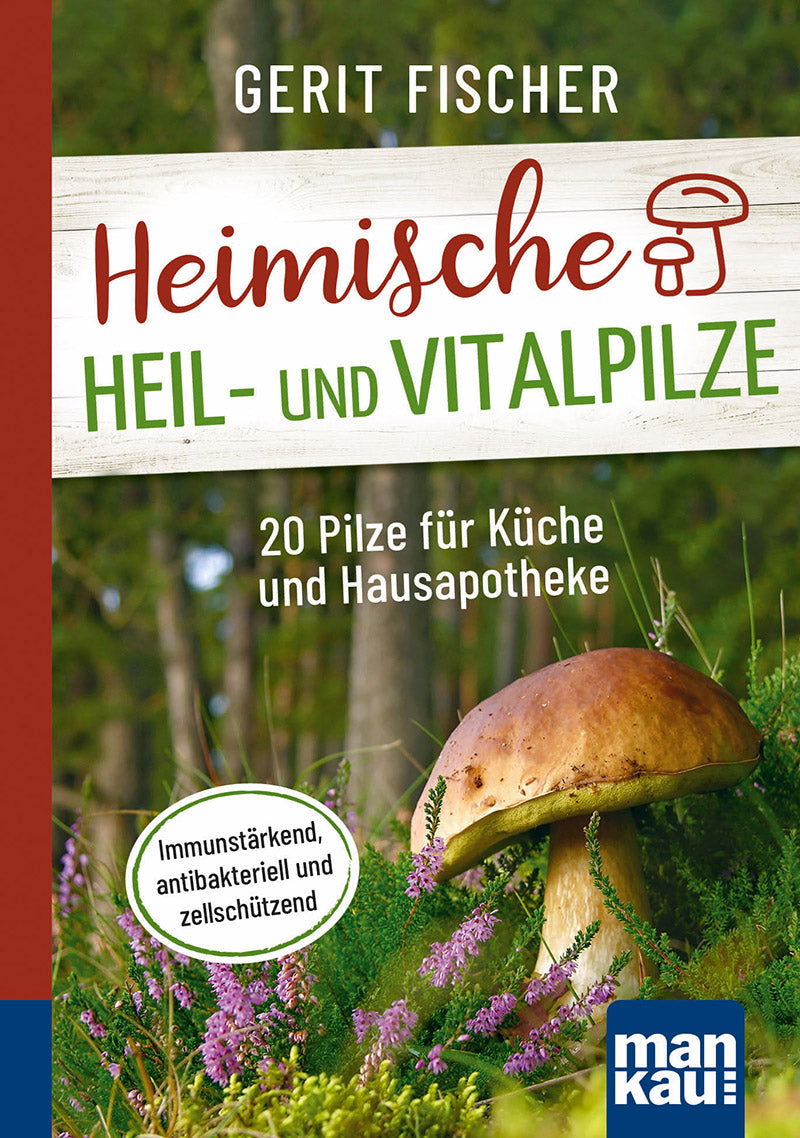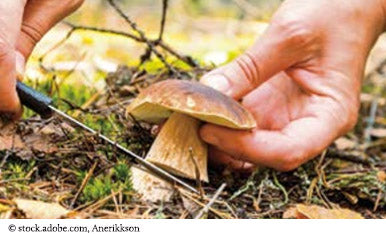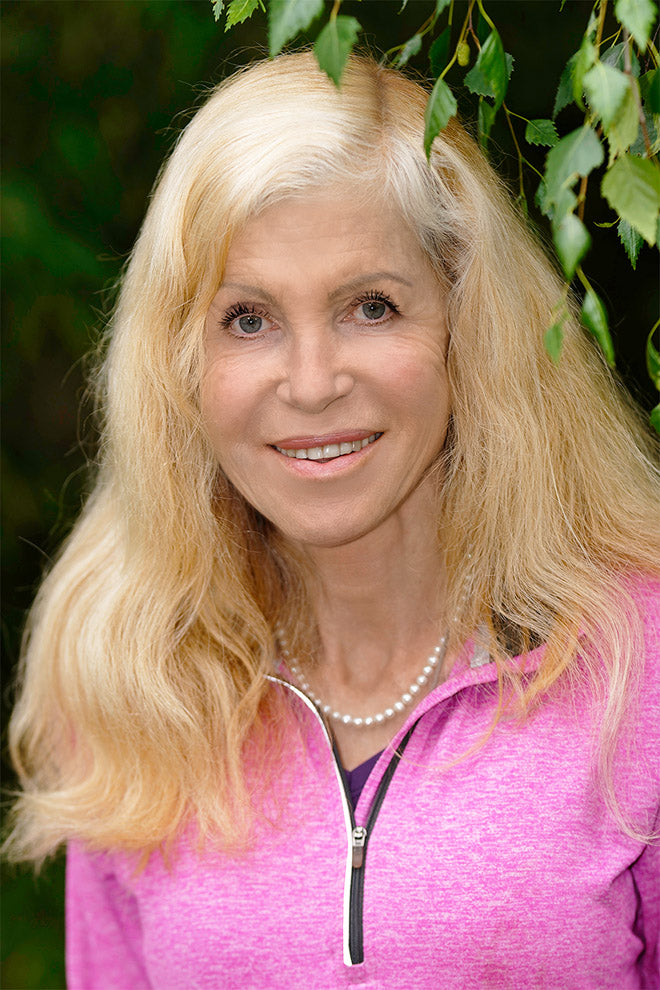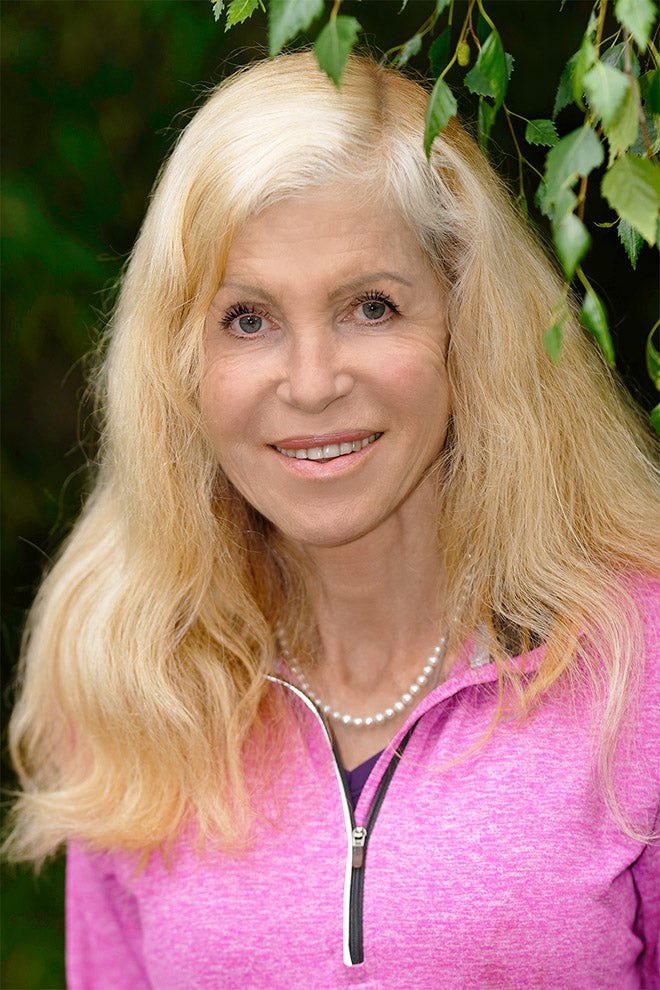
“Mushrooms are a wonderful remedy for our earth!” – Interview with nutritionist and medicinal mushroom expert Gerit Fischer
“Mushrooms are a wonderful remedy for our earth!” – Interview with nutritionist and medicinal mushroom expert Gerit Fischer
"Due to their special properties, mushrooms are able to decompose and defuse problematic substances - both in the soil and in our bodies. In my book, I present 20 native mushroom species that are easy to find and have proven healing properties. We humans can use our very own abilities to search and find in nature - it is good for the soul and makes us whole again. And anyone looking to exchange ideas on the subject of mushroom picking will quickly notice that mushroom lovers are a particularly nice bunch!" Gerit Fischer - mycomolecular consultant and author of the compact guide "Native medicinal and vital mushrooms" , which is now available in an updated and revised new edition - explains in an interview why mushrooms are much more than just a culinary delight and why we should appreciate them.
Your compact guide "Local medicinal and vital mushrooms" is being published just in time for the start of the mushroom season. What is special about your book compared to the numerous mushroom books on the market, and who are you targeting?
Gerit Fischer: This little book describes mushrooms that are firstly medicinal and secondly native to our country, whereas existing books only deal with one or the other. My book is aimed at people who enjoy being in nature and like to provide for themselves - with food and natural remedies.
Almost everyone knows that certain types of mushrooms are tasty foods, but only a few know that mushrooms can also be used to prevent, treat and alleviate illnesses. Why is this knowledge, which is thousands of years old and present in all cultures, only now being rediscovered?
Gerit Fischer: That's an interesting question. I suspect that in our time there is a longing for the natural, the ancient, the (almost) forgotten. It is as if we are looking for a balance to all the things that determine our everyday lives but that we cannot possibly understand. We use technologies as a matter of course, the way they work is incomprehensible to us. In contrast, searching and finding in nature is something where we can use our very own abilities. It makes us whole again. At least that is how I feel, and that is how many others I talk to feel.
In terms of evolutionary history, fungi are closer to animals (including us humans) than to plants. What characteristics and properties characterize the fascinating world of fungi?
Gerit Fischer: Like animals (and us), fungi split off from plants very early on and developed in their own direction. They too cannot use sunlight. Like us, they need organic food, while plants can survive on pure inorganic substances using photosynthesis. Plants build organic matter; animals, humans and fungi break down organic matter. Some experts believe that this is why our organism "understands" fungi better than plants, and therefore responds better to fungi than to herbs.
Experts are convinced that mushrooms can save the earth and heal it from environmental damage. Where does this hope come from and what makes mushrooms an ecological miracle weapon?
Gerit Fischer: I wouldn't call them a "weapon," but a remedy - namely, a soil remedy. The English word for this is "soil remediation." Thanks to their unusual enzyme composition, mushrooms are able to break down and defuse a range of problematic substances. These include many pollutants and even synthetic materials such as plastic. Or petroleum. Soils that are contaminated with petroleum can be "detoxified" with certain mushrooms and turned back into usable arable soil!
A well-known German food chemist once said that edible mushrooms are at best low in nutrients, but at worst dangerous and only useful as emergency food (and as a narcotic). Why are mushrooms so underestimated, and what are their strengths from a nutritional point of view?
Gerit Fischer: I think people like to divide the world into good and evil. Such polemics give them the feeling that they have identified an enemy and can therefore protect themselves from danger. But the world is too complex for such a simple grid. Not all mushrooms are unhealthy or poisonous; there is a whole range from dangerous to healing. Or it depends on the age of the mushroom, the location or the weather. Or on the individual person. But this complexity is confusing and not everyone wants to get involved. In addition, distrust of mushrooms has a long tradition in Europe. Knowledge about mushrooms is very old and firmly anchored in pre-Christian cultures. So it was condemned out of hand as "pagan superstition". This distrust was obvious, since mushrooms are creatures of the shadows and thrive well in the musty, gloomy areas of the forest.
From a nutritional physiology perspective, however, it is time to start treating mushrooms with more appreciation again. In terms of their composition, they are characterized by a largely calorie-free diet and by their nutrient and fiber content. This ratio is known as nutrient density, which is basically the opposite of pudding - which provides a lot of calories and few nutrients. Mushrooms are no more unique than plants, but they cannot be replaced by them either. Mushrooms have their own special ingredients that allow for more uses than if one were to restrict oneself to medicinal plants.
Your compact guide presents 20 mushrooms, from oyster mushrooms to tinder fungus, with their biological characteristics and their scientific and traditional healing properties in theory and practice. What motivated your selection and where are these types of mushrooms mainly found?
Gerit Fischer: It was important to me that the mushrooms presented can actually be found and that they really do have medicinal properties. Certain species are not that common, or there is not as much of a medicinal tradition. But with 20 species, everyone is sure to find what they are looking for. What all the mushrooms presented have in common is that they are forest dwellers; only a few species colonize fruit trees. And the great thing is that many of them can be collected in winter, when the plants hibernate.
Mushroom picking requires a certain amount of knowledge. What should you definitely pay attention to when searching for the “meat of the forest” and how can you expand and deepen your knowledge about it?
Gerit Fischer: Knowledge is only half the battle! Our somewhat rusty senses need to be awakened and challenged. Like all learning, this is achieved through repetition. If you only go into the forest once a year, you can hardly expect to be successful in collecting. But if you familiarize yourself with the forest and the trees, visit certain places again and again and experience them at different times of the year, you will begin to notice things that you would not have noticed before. In addition, the help of experienced people is irreplaceable. There are useful identification books and online identification apps, but you should not rely on them alone. Oral tradition offers much more security. A few good mushroom books and a guided mushroom hike here and there are a solid foundation for being able to identify at least three or four "beginner mushrooms" without a doubt. And if you keep at it, you will find one or two more varieties every year. In just a few years you will have more "mushroom friends" than you can use! Anyone who is really motivated will find lively exchanges and even good entertainment in the various online forums, because mushroom experts are actually a particularly nice bunch!
Your book has already been published in an updated and revised second edition. What can readers expect in the new edition?
Gerit Fischer: For the new edition, I have refined a few descriptions, for example the characteristics of the mushrooms. I have received several inquiries, particularly about the decoction of the birch polypore. Hopefully, there will be no more doubts about this in the new edition. The new cover also features tree mushrooms, specifically Judas ears, which I am personally very pleased about because they are one of my favorite mushrooms. I hope that the new edition will make it a little easier and more enjoyable to start using healing and vitalizing mushrooms for yourself.
Book tip:
Gerit Fischer: Local medicinal and vital mushrooms - 20 mushrooms for the kitchen and medicine cabinet, Mankau Verlag, 2nd revised and updated edition July 2023, paperback, 11.5 x 16.5 cm, 158 pages, 12.00 euros (D) / 12.40 euros (A), ISBN 978-3-86374-710-7.
Link recommendations:
More information about the book “Local medicinal and vital mushrooms – 20 mushrooms for the kitchen and medicine cabinet”
To the reading sample in PDF format
More about the author Gerit Fischer
Our social networks – for questions, criticism, suggestions











